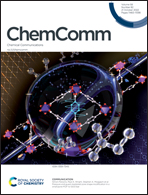Synthesis and shaping of metal–organic frameworks: a review
Abstract
Metal–organic frameworks (MOFs) possess excellent advantages, such as high porosity, large specific surface area, and an adjustable structure, showing good potential for applications in gas adsorption and separation, catalysis, conductivity, sensing, magnetism, etc. However, they still suffer from significant limitations in terms of the scale-up synthesis and shaping, hindering the realization of large-scale commercial applications. Despite some attempts having been devoted to addressing this, challenges remain. In this paper, we outline the advantages and drawbacks of existing synthetic routes such as electrochemistry, microwave, ultrasonic radiation, green solvent reflux, room temperature stirring, steam-assisted transformation, mechanochemistry, and fluid chemistry in terms of scale-up production. Then, the shaping methods of MOFs such as extrusion, mechanical compaction, rolling granulation, spray drying, gel technology, embedded granulation, phase inversion, 3D printing and other shaping methods for the preparation of membranes, coatings and nanoparticles are discussed. Finally, perspectives on the large-scale synthesis and shaping of MOFs are also proposed. This work helps provide in-depth insight into the scale-up production and shaping process of MOFs and boost commercial applications of MOFs.



 Please wait while we load your content...
Please wait while we load your content...